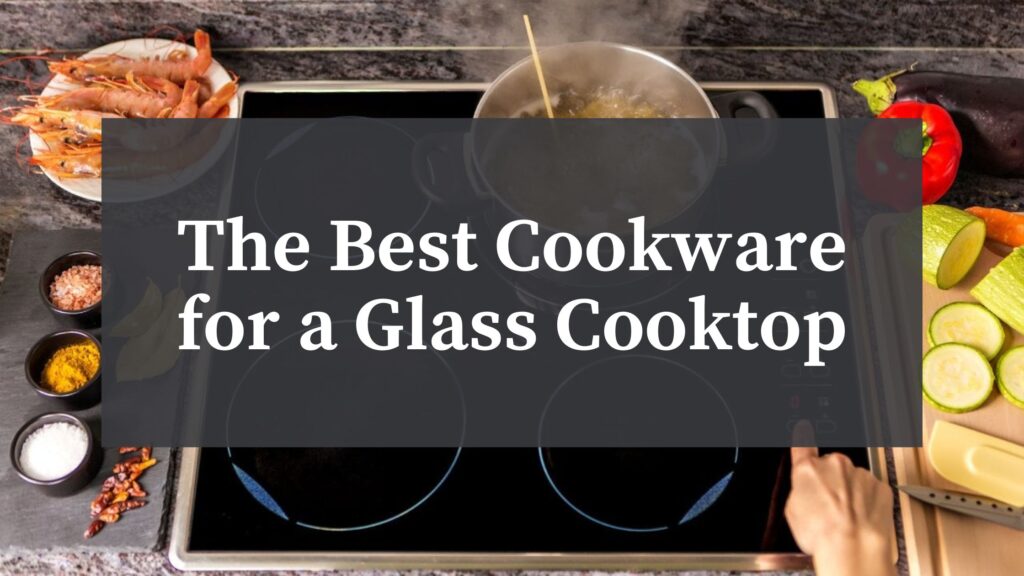
The Need for Proper Cookware on a Glass Cooktop Stove
There’s been a lot of talk lately about banning gas stoves in new construction, and while we here at BSC Culinary aren’t taking a position (and we are still proud to sell gas stoves), there are a lot of advantages to electric and induction stoves that employ a glass cooktop. Of course, a glass cooktop isn’t just ordinary glass; it is ceramic glass that can withstand high temperatures (up to 1200℉) and is much harder to break.
If you are considering a new stove with a glass cooktop, either electric or induction, you need to consider proper cookware. If you are replacing a gas stove with an induction or electric glass cooktop, you may need to replace your cookware.
Why is that?
Most conventional pots and pans aren’t designed for glass cooktops. They don’t make good contact with the glass cooktop, and consequently don’t heat up evenly, rendering food with hot and cold spots (unless you want to spend your time constantly stirring).
To shed more light on the best cookware for a glass cooktop, let’s look at:
- The difference between an electric and an induction glass cooktop
- Cookware that is incompatible with any glass cooktop
- Cookware for an electric glass cooktop
- Cookware for an induction glass cooktop
Electric vs. Induction Glass Cooktop
An electric glass cooktop has heating elements underneath that get hot from an electric current. When the element is glowing, it is transferring heat in the form of infrared energy to the glass cooktop. The heat in turn is then transferred to cookware placed on top of it.
An induction glass cooktop is also an electric appliance, but it heats your food differently. Induction glass cooktops use copper coils that create a magnetic current when cookware is placed on top of them. So instead of passing heat from the glass cooktop to the cookware to the food contained within, induction glass cooktops pass on the magnetic current so the cookware itself becomes the heating source. Which is why you can put your hands on top of an induction cooktop and nothing happens (unlike if you touched an electric glass cooktop if it was glowing — ouch!). Your hand isn’t metal, so it can’t conduct magnetic energy (but the rings on your hand could, so take them off if you want to try this at home, or, better yet, just take our word for it).
So, we have two kinds of glass cooktops, and two different considerations for proper cookware. First, though, let’s look at cookware that can’t be used on either type of glass cooktop.
Cookware You Don’t Use on a Glass Cooktop
For cookware to work effectively on a glass cooktop, flat bottoms are essential. Otherwise, heat isn’t distributed evenly to the pan, resulting in unevenly heated food. Don’t use cookware made of cast iron, glass, or stoneware — these materials can potentially scratch or otherwise damage a glass cooktop surface.
Cookware for an Electric Glass Cooktop
Stainless steel cookware with flat bottoms work best on an electric glass cooktop. By “flat,” we mean perfectly flat. How can you know for sure? Turn the cookware upside down and place a ruler on top. If there are no gaps beneath the ruler, or you can’t rock the ruler at all, you’ve got a perfectly flat-bottomed pot or pan.
Typically, the elements beneath the glass cooktop are indicated by a series of circles representing the “burners”; on most glass cooktops, these circle burners are different sizes. You want to match the size of the pot or pan to the size of the circle burner. If you use too large a pot or pan, whatever portion of the food that’s not on the burner won’t brown or simmer evenly along with the rest of the food in the pot or pan that is on the burner.
Cookware for an Induction Glass Cooktop
An induction glass cooktop requires special cookware that is only used on induction ranges. This cookware is made of ferromagnetic metal that can conduct magnetic energy, causing the pot or pan to heat up. Now, just because you are considering a new induction glass cooktop doesn’t necessarily mean you must throw out all your existing cookware that you’ve used on an electric or gas stove. Stainless steel is made of ferromagnetic metal, for example. So if you’ve got stainless steel cookware with perfectly flat bottoms, more than likely you can still use it.
How can you know for sure if your cookware is compatible with induction heating? Easy. Put a magnet on it. If the magnet sticks, the cookware is compatible.
And if you’re shopping for new cookware, be aware that most, though not all, food-grade stainless steel cookware is induction-compatible. You can also use carbon steel cookware. Check the label on the packaging to make sure. To be doubly sure, the magnet trick comes in handy to make sure it’ll work with your induction cooktop once you get it home.
A word about anodized aluminum cookware: this material is not magnetic and therefore cannot be used with an induction glass cooktop. That said, because so many people like anodized aluminum cookware because of its durability, light weight, and non-stick properties, some manufacturers are integrating iron or a magnetic steel disc to make it induction-compatible. Again, check the label and do a magnet test to ensure anodized aluminum cookware will work on an induction glass cooktop.
Consult the Glass Cooktop Experts
We here at BSC don’t carry cookware of any kind, but we do offer a wide selection of electric and induction cooktops to use it on.
Every glass cooktop comes with error-free installation and delivery. Our factory-certified technicians ensure your glass cooktop is installed to your complete satisfaction. If you prefer, BSC provides drop-off contactless delivery.
Contact us to further discuss how we can provide you with the best glass cooktop, and we might even suggest the best cookware that can go with it.
